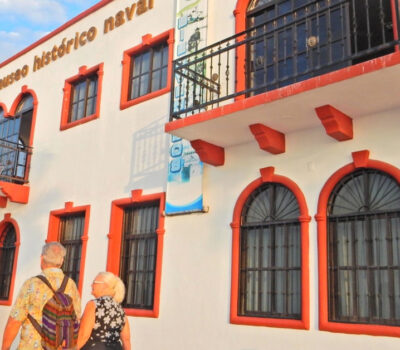This is the capital’s biggest pre-Hispanic celebration-on the day the city was founded by the Aztecs nearly 700 years ago.
“Today, we recognize the greatness of our ancestors, because even now the great nations of the world haven’t built a city on a lake, like our culture did,” Medicine man Oscar Lobo Blanco said.
Legend has it that the wandering Aztecs decided to settle on the lake when they saw a long-awaited omen-an eagle perched on a cactus devouring a snake.
Now Aztec dancers are again converging on the city plaza. Beneath their feet, the ruins of the great Aztec temple. Above them, the Spanish cathedral-a symbol of the Aztec empire’s demise. Five hundred years after the Spanish conquest, the revelers are determined to keep some of the old ways alive.
The ceremonies are long and involved and last all day. It’s quite difficult for an outsider to know exactly what’s going on, but right now we’re venerating the earth and the sun.
The dancers come from longstanding clubs all over the city. They say their clothes are modeled on ancient Mexican manuscripts, although many have been “glammed” up over time. Pre-Hispanic fashion is a serious business. Each feather in this headdress costs 20 dollars.
They come from all from all walks of life. Patricia is a nurse.
“Some people think it’s weird but … Lots of my work colleagues and friends who are interested come along to our meetings. Some just come a couple of times but others join the group and that’s nice,” Nurse Patricia Junco said.
More and more Mexicans are reconnecting with the country’s indigenous culture. There are 400 courses teaching the Aztec language, Nauhatl, in Mexico City alone and the Aztec drink of choice, the milky-looking “pulque” – made from the fermented sap of agave plants – is regaining popularity.
“I think that Mexicans are becoming more aware that things were different in the past, that we have very strong roots. And if a society doesn’t know it’s roots,” Student Juan Carlos Montes said.
Through these ancient rhythms, the young dancers say they feel more connected to a time when being Mexican … meant being Aztec.
This is the capital's biggest pre-Hispanic celebration-on the day the city was founded by the Aztecs nearly 700 years ago.
"Today, we . . .











